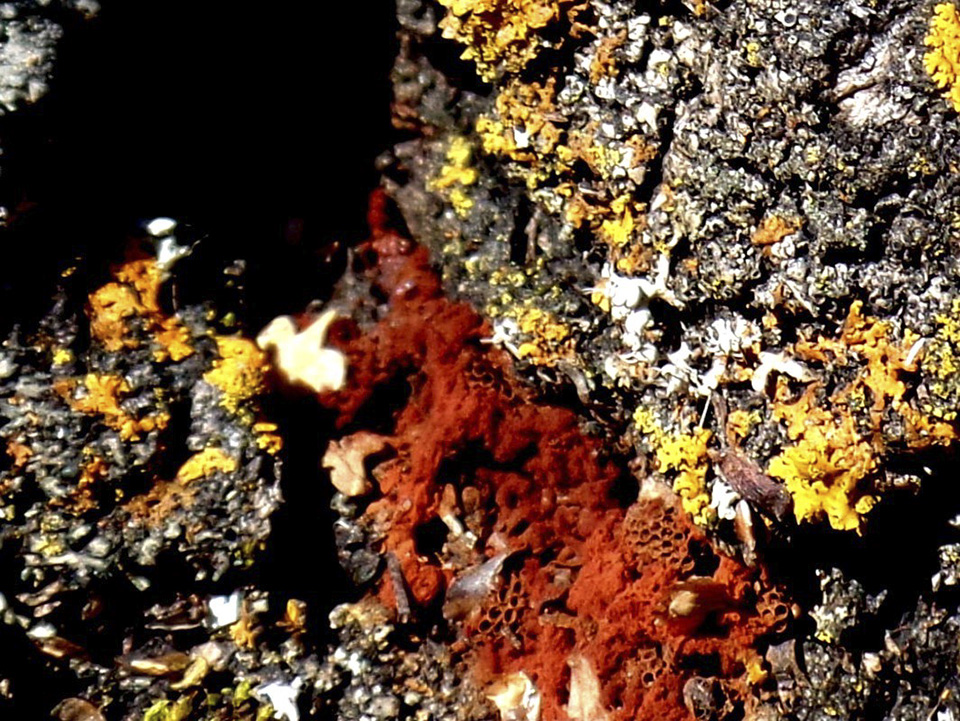
Plasmodial slime molds are single-celled organisms, masses of protoplasm without cell walls and with thousands of nuclei. Like animals, they move and violently eject unwanted inorganic materials. Like amoeba, they feed by engulfing particles of food. Like fungi, they reproduce by producing fruit bodies containing spores that are distributed by wind. Formerly classified as fungi, plasmodial slime molds are now known to be unrelated.
Dog vomit slime mold (Fuligo septica) is a plasmodial slime mold. It has a worldwide distribution, occurring on every continent except Greenland and Antarctica. It is often found in urban areas from May to October. It grows on the rotten wood of stumps, logs, and wood mulches; on garden soil enriched with manure; and also on living plants. It may migrate one meter or more to nearby food sources. It feeds on bacteria, spores of fungi and non-flowering plants, protozoa, and nonliving organic matter. Its common name accurately describes its appearance. It is not edible.
Dog vomit slime mold may appear as a cushion-like mass, a slimy sheet, or a crust-like sheet. When it first appears it is white to yellow and slimy. At some point it transforms into a large, cushion-like, white or yellowish fruiting body covered by a brittle crust. Breaking the crust away reveals a dull black spore mass.
http://www.minnesotaseasons.com/Slime_Molds/dog_vomit_slime_mold.html



